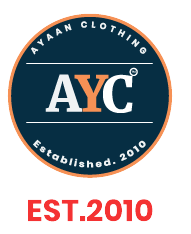The garments and textile industry in Bangladesh is one of the most critical drivers of the country’s economic development. Accounting for more than 80% of the nation’s exports, it plays a pivotal role in employment creation, poverty reduction, and overall economic stability. Bangladesh has emerged as the second-largest exporter of readymade garments (RMG) globally, only after China.
Current Landscape of the Garments Sector
The Bangladesh garments industry employs over 4.4 million people, a majority of whom are women, offering vital employment opportunities that significantly contribute to the socio-economic progress of the country. The sector is dominated by the production of RMG such as knitwear, woven garments, and home textiles, primarily for export markets in Europe, the United States, and other regions.
Key factors that have fueled the growth of the garments industry include:
- Competitive Labor Costs: One of the lowest labor costs globally.
- Government Support: Policies such as tax exemptions for exports and duty-free import facilities for raw materials.
- Growing Global Demand: Particularly from developed markets.
- Efficiency in Manufacturing: Technological adoption and improved infrastructure.
Strengths of the Bangladesh Garments Sector
- Skilled Workforce: Bangladesh has a large pool of workers skilled in textile production and garment manufacturing.
- Strategic Location: Close proximity to raw materials from South Asia, and a well-connected supply chain, allows manufacturers to export goods quickly, especially to Western markets.
- Large Export Volume: With over 4,500 garment factories, Bangladesh can handle high-volume orders efficiently.
- Sustainability Initiatives: Bangladesh leads in green manufacturing, with several factories certified as eco-friendly by international standards, which has enhanced the country’s image as a responsible producer in global supply chains.
Challenges Facing the Industry
Despite its success, the garments sector faces challenges that could affect its future growth:
- Dependence on Imported Raw Materials: Bangladesh imports most of its cotton and other raw materials, increasing production costs.
- Worker Rights and Safety: High-profile incidents such as the Rana Plaza collapse have brought worker safety and rights into the spotlight, prompting calls for reforms.
- Competition: Competing countries like Vietnam, Cambodia, and India are offering similar low-cost production options with better infrastructure.
- Technological Gaps: While Bangladesh has made progress, there’s still room to enhance automation and digital tools to increase efficiency and reduce costs.
Future Possibilities and Growth Potential
The Bangladesh garments sector holds tremendous potential for growth in the coming years. Some of the possibilities include:
- Moving Up the Value Chain: Shifting focus from low-cost mass production to high-value, branded, and fashion-driven apparel can increase profit margins. This will require investments in design capabilities, product development, and marketing.
- Diversification of Markets: Expanding beyond traditional markets such as Europe and the US to emerging markets in Asia, Africa, and Latin America will reduce dependency on a few regions.
- Innovation in Sustainable Fashion: With growing global demand for sustainable and ethically produced clothing, Bangladesh has the opportunity to lead in eco-friendly textiles, which could further enhance its reputation and competitiveness.
- Investment in Automation: Embracing Industry 4.0 technologies—such as automation, AI, and robotics—can help increase productivity, reduce costs, and improve working conditions, positioning Bangladesh as a modern garment manufacturing hub.
- Vertical Integration: Expanding capacity in fabric production and raw material sourcing within the country will reduce dependence on imports and cut production times, enabling more agile responses to global trends.

